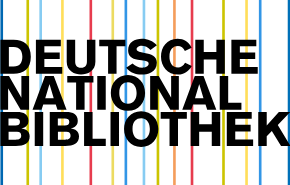THE ROLE OF THE TEACHER: TRADITIONAL VS. MODERN APPROACHES
DOI:
https://doi.org/10.55640/Keywords:
1. Traditional Teaching Methods 2. Modern Teaching Approaches 3. Teacher-Centered Learning 4. Student-Centered Learning 5. Active Learning Strategies 6. Project-Based Learning 7. Classroom Engagement 8. Technology in Education 9. Collaborative Learning 10. Critical Thinking Development 11. Teaching Methodologies 12. Blended Learning ApproacheAbstract
This study examines how teachers function in both conventional and contemporary teaching methods, examining how they affect learning outcomes, information retention, and student involvement. Although they offer structured learning, traditional teaching approaches that emphasize lectures, memorization, and teacher-centered instruction frequently restrict student interaction and critical thinking. On the other hand, contemporary methods that encourage active engagement, creativity, and problem-solving abilities include project-based learning, student-centered learning, and technology integration. According to the research findings, while modern teaching methods increase engagement and deeper learning, limitations such as teacher training, resource availability, and institutional constraints prevent complete implementation. The study reveals that a balanced approach, combining classic techniques' organized discipline with the interactive and flexible nature of modern education, can improve learning experiences. Future study should concentrate on improving teacher training programs, boosting access to digital resources, and creating adaptive curricular models to meet the changing educational context.
References
Akhmedova, M. (2025). Enhancing English reading skills: Evidence-based strategies for listening. Global Munosabatlar Nazariyasi: Yoshlarning Taraqqiyot G’oyalari, 1(2), 201-205.
2. Akhmedova, M. (2025). Specific features of teaching academic essay writing. Global Munosabatlar Nazariyasi: Yoshlarning Taraqqiyot G’oyalari, 1(2), 197-200.
3. Celce-Murcia, M. (2010). Teaching pronunciation: A course book and reference guide. Cambridge University Press.
4. Harmer, J. (2007). The practice of English language teaching (4th ed.). Pearson Education.
5. Nation, P. (2013). Learning vocabulary in another language (2nd ed.). Cambridge University Press.
6. Piaget, J. (1952). The origins of intelligence in children. Norton.
7. Stevick, E. W. (1980). Teaching languages: A way and ways. Newbury House.
8. Vygotsky, L. S. (1978). Mind in society: The development of higher psychological processes. Harvard University Press.
9. Richards, J. C., & Rodgers, T. S. (2014). Approaches and methods in language teaching (3rd ed.). Cambridge University Press.
10. Brown, H. D. (2007). Principles of language learning and teaching (5th ed.). Pearson Education.
11. Dörnyei, Z. (2001). Motivational strategies in the language classroom. Cambridge University Press.
12. Kumaravadivelu, B. (2006). Understanding language teaching: From method to postmethod. Routledge.
Downloads
Published
Issue
Section
License

This work is licensed under a Creative Commons Attribution 4.0 International License.
Authors retain the copyright of their manuscripts, and all Open Access articles are disseminated under the terms of the Creative Commons Attribution License 4.0 (CC-BY), which licenses unrestricted use, distribution, and reproduction in any medium, provided that the original work is appropriately cited. The use of general descriptive names, trade names, trademarks, and so forth in this publication, even if not specifically identified, does not imply that these names are not protected by the relevant laws and regulations.







